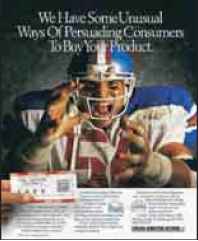Exhibit 1616 Catalina Marketing promotes its checkout coupons

much lower for instant cross-ruff coupons, as it averages around 5 percent. Instant coupons give consumers an immediate point-of-purchase incentive, and can be selectively placed in terms of promotion timing and market region. Some companies prefer instant coupons to price-off deals because the latter require more cooperation from retailers and can be more expensive, since every package must be reduced in price.
Another distribution method that has experienced strong growth over the past 10 years or so is in-store couponing, which includes all co-op couponing programs distributed in a retail store environment. This medium now accounts for around 8 percent of total coupon distribution. Coupons are distributed to consumers in stores in several ways, including tear-off pads, handouts in the store (sometimes as part of a sampling demonstration), on-shelf dispensers, and electronic dispensers.
Most of the coupons distributed in stores are through ActMedia's Instant Coupon Machine. This coupon dispenser is mounted on the shelf in front of the product being promoted. It has blinking red lights to draw consumers' attention to the savings opportunity. These in-store coupons have several advantages: They can reach consumers when they are ready to make a purchase, increase brand awareness on the shelf, generate impulse buying, and encourage product trial. They also provide category exclusivity. In-store couponing removes the need for consumers to clip coupons from FSIs or print ads and then remember to bring them to the store. Redemption rates for coupons distributed by the Instant Coupon Machine are very high, averaging about 6 to 8 percent.
Another popular way to distribute in-store coupons is through electronic devices such as kiosks or at the checkout counter. Some electronically dispensed coupons, such as Catalina Marketing Corp.'s Checkout Coupon, are tied to scanner data at each grocery store checkout. When the specified product, such as a competitive brand, is purchased, the consumer receives a coupon at the checkout for the company's brand (Exhibit 16-16). Companies also use this system to link purchases of products that are related. For example, a consumer who purchases a caffeine-free cola might be issued a coupon for a decaffeinated coffee.
Major advantages of electronically dispensed checkout coupons are that they are cost-effective and can be targeted to specific categories of consumers, such as users of competitive or complementary products. Since 65 to 85 percent of a manufacturer's coupons are used by current customers, marketers want to target their coupons to users of competitive brands. Redemption rates are also high for electronically dispensed coupons, averaging around 5 to 7 percent.
Couponing Trends Over the past four years the number of coupons distributed has declined by nearly 20 percent. While the average American household is still being barraged with nearly 3,000 coupons per year, many marketers have cut back on their use of coupons because of concerns over costs and effectiveness. Critics argue that coupons cost too much to print, distribute, and process and that they don't benefit enough consumers. Consumers redeemed less than 2 percent of the 239 billion coupons distributed in 2001. Former Procter & Gamble CEO Durk Jager echoed the sentiment of many consumer-product companies when he said, "Who can argue for a practice that fails 98 percent of the time?"32
Despite the growing sentiment among major marketers that coupons are inefficient and costly, very few companies, including Procter & Gamble, are likely to abandon them entirely. 3 Although most coupons never get used, consumers use some of them and have come to expect them. More than 80 percent of consumers use coupons and nearly one-quarter say they use them every time they shop. With so many consumers eager for coupons, marketers will continue to accommodate them. However, companies as well as the coupon industry are looking for ways to improve on their use.
Marketers are continually searching for more effective couponing techniques. General Mills, Kellogg, and Post replaced brand-specific coupons with universal coupons good for any of their cereal brands. For example, to make its couponing spending more efficient, Post began using universal coupons worth $1.50 off two boxes (matching the average cereal-coupon discount of 75 cents) and cut coupon distribution in half. Even though Post dropped only half as many coupons, redemption rates reached 6 percent, far exceeding the FSI average of less than 2 percent.34
Some marketers are broadening their use of account-specific direct-mail couponing, in which coupons are cobranded with individual retailers but can be used by consumers at any retail store. Procter & Gamble began using account-specific couponing with Tide detergent and has broadened the program to include mailings for a number of other brands. 5
Some marketers and retailers are looking to the Internet as a medium for distributing coupons. Several companies now offer online couponing services. Catalina Marketing started Valupage.com as a way for marketers to reach consumers at home with promotions traditionally offered in-store, including coupons. Consumers can log on to the website, type in their Zip code and choose from a list of participating grocery stores in their area and download manufacturer- and retailer-sponsored coupons. A number of retailers, particularly supermarkets, are also using the Internet to distribute coupons to encourage consumers to shop at their stores. Cox Target Media also offers consumers the opportunity to access coupons online, through Valpak.com. The website makes the same coupons and offers available to consumers that come in the Val-pak direct-mail envelope (Exhibit 16-17).
Continue reading here: Premiums
Was this article helpful?